
Gion: The Heartbeat of Kyoto's Traditional Culture
Gion in Kyoto is a captivating blend of traditional culture, historic architecture, and enchanting geisha district, offering a unique glimpse into Japan's rich heritage.
Gion, located in the heart of Kyoto, is one of Japan's most famous geisha districts. As you walk through its narrow streets, you'll be transported back in time by the preserved wooden machiya houses, traditional teahouses, and the overall atmosphere that harks back to the Edo period. The area is renowned for its evening entertainment, where you might catch a glimpse of a geiko (Kyoto dialect for geisha) or a maiko (apprentice geisha) gracefully making their way to an engagement. The iconic Hanami-koji Street is a must-visit, lined with traditional tea houses and restaurants that offer an authentic taste of Kyoto's exquisite cuisine. The Shirakawa area, with its picturesque canal lined with weeping willow trees and traditional establishments, is perfect for a tranquil stroll and photo opportunities. Gion is also home to the famous Yasaka Shrine, a vibrant and historic site that hosts numerous festivals throughout the year, including the grand Gion Matsuri in July. Nearby, the Kennin-ji Temple, Kyoto's oldest Zen temple, offers a peaceful retreat with its beautiful gardens and historic architecture. With its rich cultural heritage and charming streets, Gion is a neighborhood that promises an unforgettable experience for every visitor.
Local tips in Gion
- Visit Gion in the evening to increase your chances of seeing geiko and maiko.
- Try to book a tea house experience in advance, as they can be quite popular.
- Wear comfortable shoes as you will be walking on cobblestone streets.
- Check the local calendar for festivals and events at Yasaka Shrine.
- Respect the privacy of geiko and maiko by not blocking their path or asking for selfies.
Gion: The Heartbeat of Kyoto's Traditional Culture
Gion, located in the heart of Kyoto, is one of Japan's most famous geisha districts. As you walk through its narrow streets, you'll be transported back in time by the preserved wooden machiya houses, traditional teahouses, and the overall atmosphere that harks back to the Edo period. The area is renowned for its evening entertainment, where you might catch a glimpse of a geiko (Kyoto dialect for geisha) or a maiko (apprentice geisha) gracefully making their way to an engagement. The iconic Hanami-koji Street is a must-visit, lined with traditional tea houses and restaurants that offer an authentic taste of Kyoto's exquisite cuisine. The Shirakawa area, with its picturesque canal lined with weeping willow trees and traditional establishments, is perfect for a tranquil stroll and photo opportunities. Gion is also home to the famous Yasaka Shrine, a vibrant and historic site that hosts numerous festivals throughout the year, including the grand Gion Matsuri in July. Nearby, the Kennin-ji Temple, Kyoto's oldest Zen temple, offers a peaceful retreat with its beautiful gardens and historic architecture. With its rich cultural heritage and charming streets, Gion is a neighborhood that promises an unforgettable experience for every visitor.
Iconic landmarks you can’t miss
Yasaka-jinja Shrine
Yasaka-jinja Shrine: A historic Shinto shrine in Kyoto, perfect for cultural exploration and spiritual reflection in a serene setting.
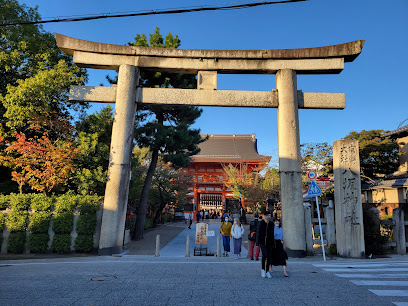
Sannenzaka
Discover the historic charm of Sannenzaka in Kyoto, where traditional architecture meets vibrant local culture amidst stunning temple views.

Hanamikoji Street
Explore Hanamikoji Street in Kyoto, a beautifully preserved pathway showcasing traditional architecture, vibrant geisha culture, and exquisite local cuisine.
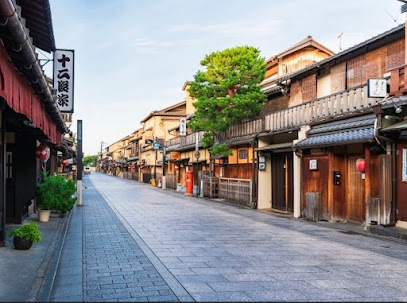
Maruyama Park
Discover the enchanting beauty of Maruyama Park in Kyoto, a serene city park perfect for cherry blossom viewing, cultural experiences, and peaceful escapes.
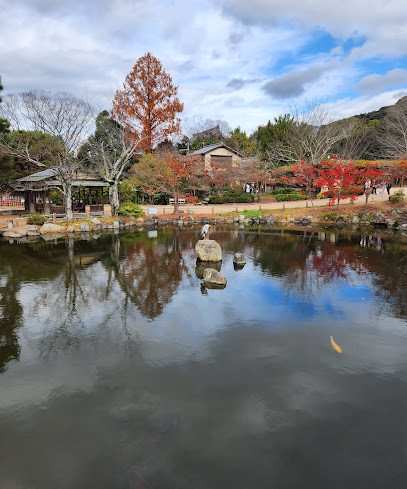
Gion Corner
Experience the heart of Kyoto's traditional arts at Gion Corner, where captivating performances bring Japan's rich culture to life.
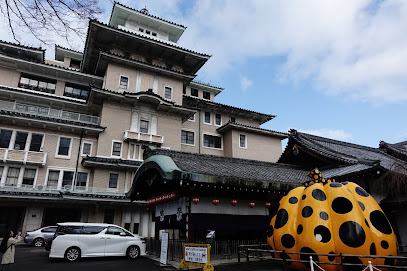
Yasaka Jinja Nishiromon Gate (Western Tower Gate)
Discover the stunning Yasaka Jinja Nishiromon Gate, a captivating Shinto shrine entrance that embodies the cultural richness of Kyoto.
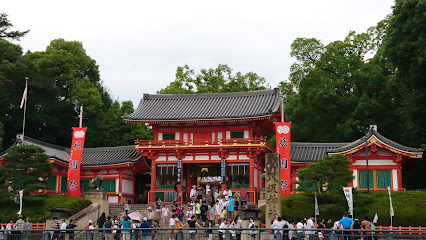
Shirakawa Lane
Explore the serene beauty of Shirakawa Lane, a charming street in Kyoto filled with traditional architecture, picturesque views, and rich cultural experiences.
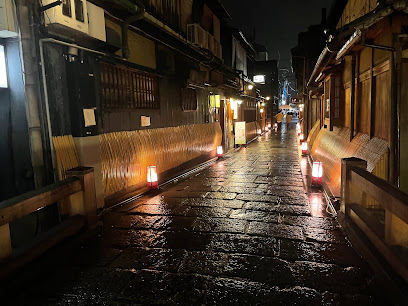
South Tower Gate
Discover the South Tower Gate of Yasaka Shrine, a stunning Shinto landmark and a serene escape in the heart of Kyoto's cultural heritage.
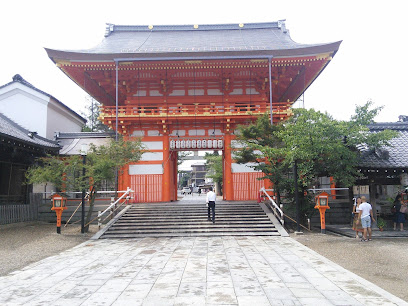
Warai Clock Tower
Discover the Warai Clock Tower in Kyoto's Gion district, a historical landmark where tradition meets modernity, and every hour brings a new story.
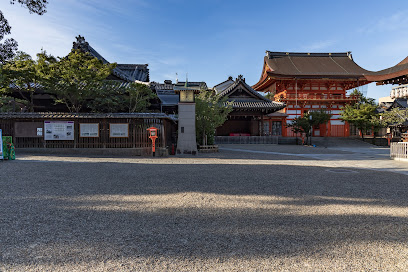
Shrine
Discover the serene beauty and rich spiritual traditions at this enchanting Shinto shrine in Kyoto, a true gem of Japan's cultural heritage.
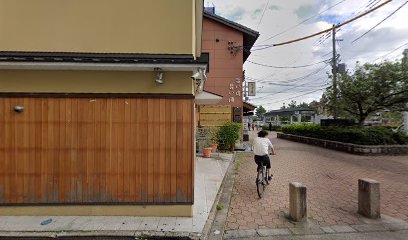
Unmissable attractions to see
Yasaka-jinja Shrine
Experience the spiritual serenity of Yasaka-jinja Shrine in Kyoto, a stunning Shinto shrine steeped in history and vibrant cultural festivals.

Sannenzaka
Explore Sannenzaka, a historical street in Kyoto filled with traditional shops, stunning views, and a taste of Japan's rich cultural heritage.
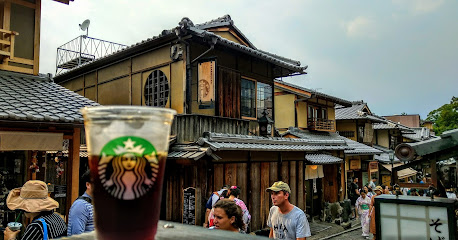
SAMURAI NINJA MUSEUM KYOTO With Experience
Discover the thrilling world of samurai and ninjas at Kyoto's interactive museum, where history and excitement come together for an unforgettable visit.
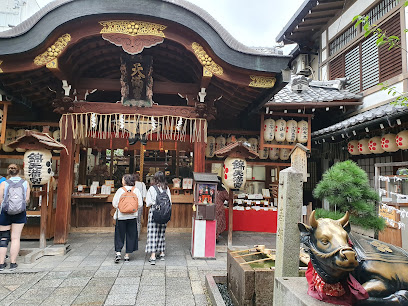
Maruyama Park
Discover the enchanting beauty of Maruyama Park in Kyoto, where cherry blossoms bloom and tranquility reigns amid lush landscapes.
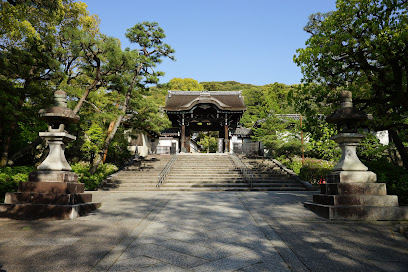
Ishibe kōji road
Experience the historic charm of Ishibe Kōji Road in Kyoto, where traditional architecture meets serene beauty in a captivating journey through time.
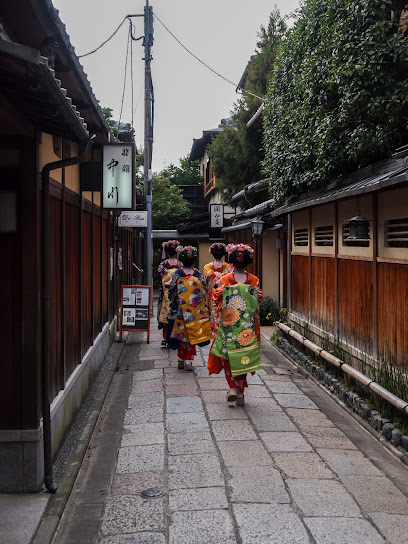
Ichinenzaka Hill
Explore Ichinenzaka Hill in Kyoto - a scenic hilltop adorned with traditional architecture, local shops, and stunning views that capture the essence of Japan.
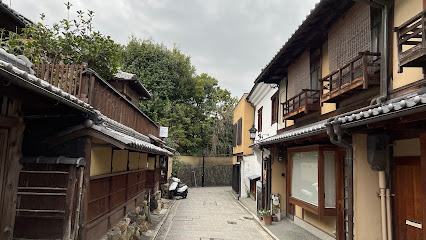
Gion-Shirakawa spotlight
Discover the enchanting beauty of Gion-Shirakawa in Kyoto, where tradition meets tranquility along picturesque canals and historic streets.
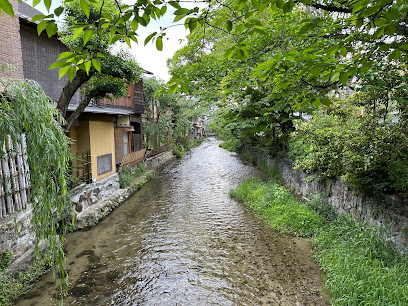
Nishi-Hanamikoji Street
Explore Nishi-Hanamikoji Street in Kyoto for a blend of traditional architecture, geisha culture, and exquisite local cuisine in the heart of Gion.
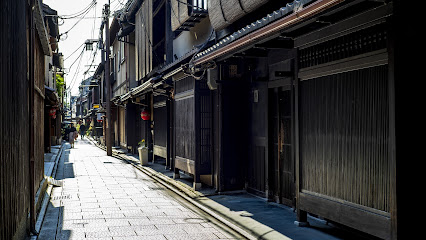
The Flower Corridor
Explore the enchanting Flower Corridor in Kyoto, where breathtaking floral displays meet intricate stone carvings in a serene setting.
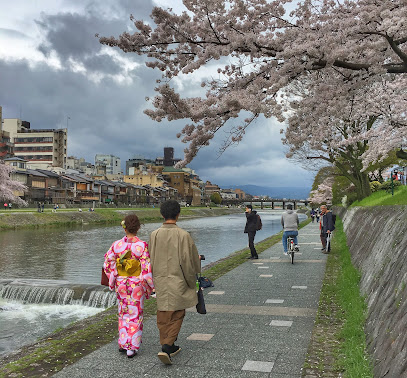
Essential places to dine
Kobe Beef Steak Restaurant MOURIYA GION
Experience the luxury of authentic Kobe beef at MOURIYA GION in Kyoto – where every meal is a masterpiece.

Teppan Tavern Tenamonya
Experience authentic Japanese flavors at Teppan Tavern Tenamonya in Kyoto's historic Gion district—where teppanyaki meets tradition.
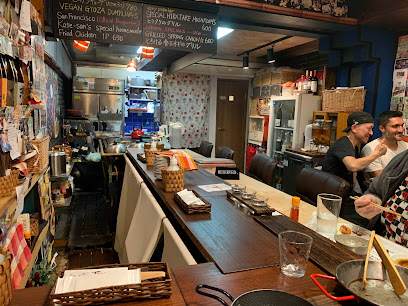
Gion Karyo
Experience the art of kaiseki dining at Gion Karyo in Kyoto's historic Gion district—a perfect blend of tradition and flavor.
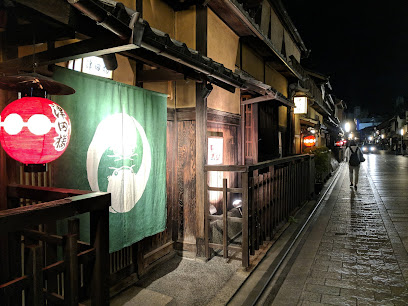
Wagyu Volcano OAGARI
Experience the art of Japanese dining at Wagyu Volcano OAGARI in Kyoto – where exquisite flavors meet culinary tradition.
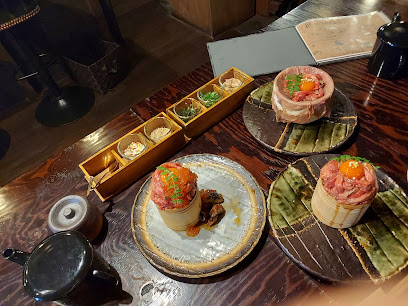
Gion Yata
Experience authentic kaiseki cuisine at Gion Yata, where every dish tells a story of tradition and seasonal beauty in Kyoto.
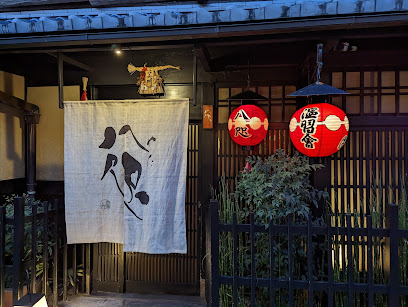
Gion Moriwaki
Discover authentic Kaiseki cuisine at Gion Moriwaki in Kyoto - where tradition meets culinary artistry in an unforgettable dining experience.
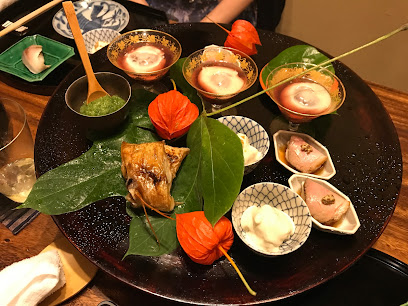
Premium Pound Gion
Experience culinary artistry at Premium Pound Gion - where French steakhouse elegance meets authentic Teppanyaki flair in Kyoto's historic Gion district.
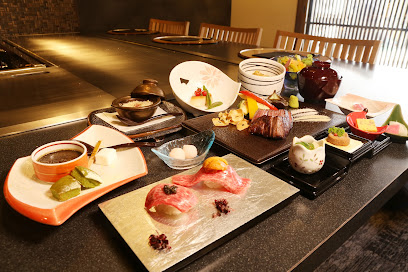
Gion Nanba
Discover authentic Kyoto cuisine at Gion Nanba—where tradition meets exquisite culinary artistry in the heart of Japan's historic Gion district.

Gion Kurashita
Experience authentic Kyoto-style kaiseki dining at Gion Kurashita - where every meal is a celebration of Japanese culture and seasonal flavors.
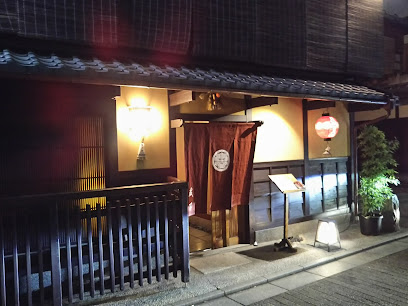
Gion Mikaku
Experience the finest steak in Kyoto at Gion Mikaku, where tradition meets culinary excellence in an elegant setting.
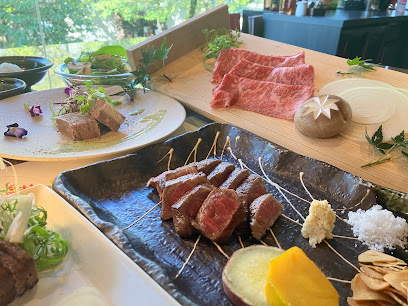
Markets, malls and hidden boutiques
Ki-Yan Stuzio Gion Ishidan-shita Shop
Discover the enchanting blend of fashion and art at Ki-Yan Stuzio Gion Ishidan-shita Shop in Kyoto's historic Gion district.
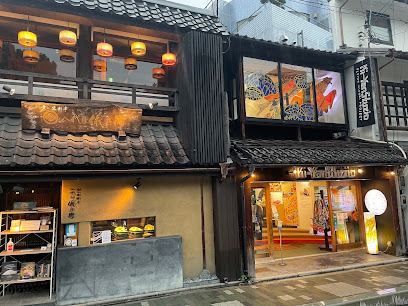
Ayanokoji Gion
Discover the artistry of Japan at Ayanokoji Gion, a charming souvenir store nestled in Kyoto's historic Gion district, specializing in unique bags and gifts.
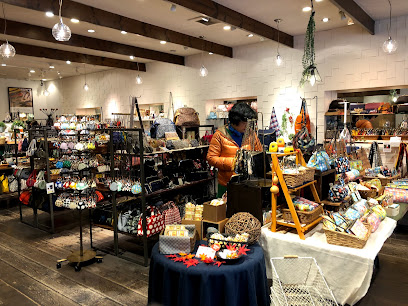
Maicoto
Explore Maicoto, a charming souvenir and confectionery store in Kyoto offering artisanal treats and unique gifts to savor and share.
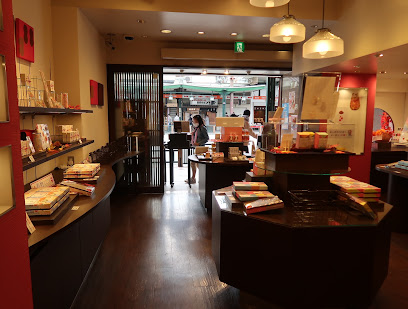
Kurochiku
Discover Kurochiku in Kyoto: A charming souvenir store showcasing authentic Japanese crafts and unique gifts that capture the essence of Japan.
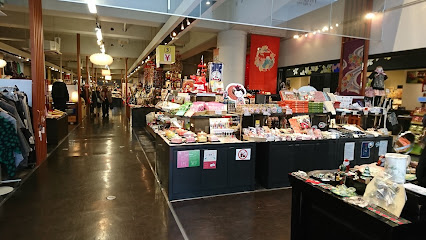
Studio Ghibli shop
Immerse yourself in the magical world of Studio Ghibli at this charming Kyoto gift shop, featuring exclusive merchandise and enchanting decor.
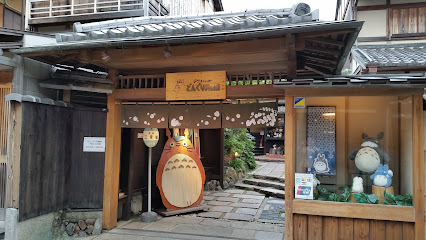
パゴン祇園店 -Pagong (Japanese Design Clothing)
Explore the finest in Japanese women's fashion at Pagong Gion, where tradition meets modern style in the heart of Kyoto.
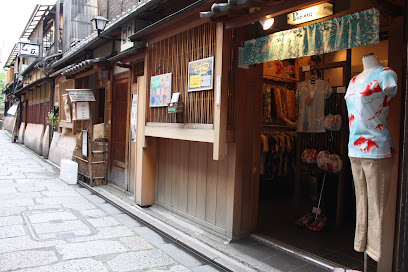
Souvenir Kyoto
Explore Souvenir Kyoto for authentic crafts and gifts that reflect the rich cultural heritage of Japan's ancient capital.
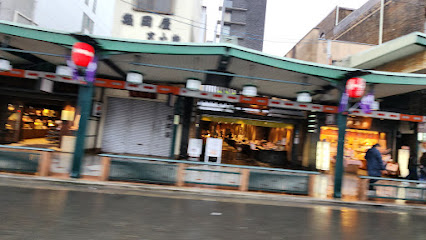
Kyo Sakura
Discover Kyo Sakura in Kyoto: A clothing store where tradition meets modern style, offering unique fashion pieces and authentic local craftsmanship.
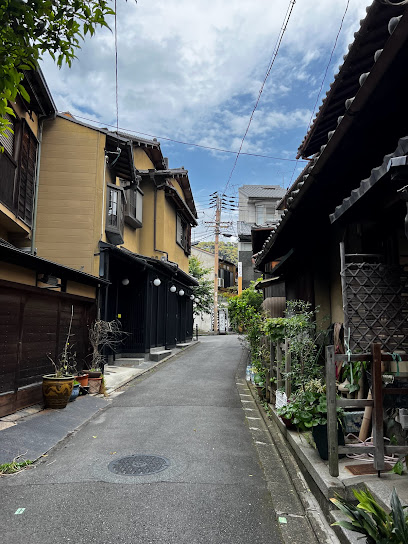
菊梅 SHOP GION KYOTO
Explore the essence of Kyoto at 菊梅 SHOP GION KYOTO, where traditional crafts meet contemporary design in a charming gift shop.
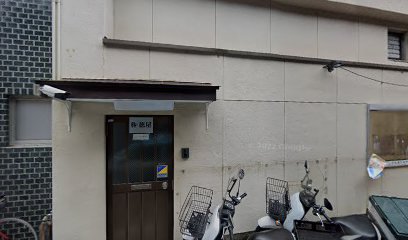
fine antique
Explore Fine Antique in Kyoto's Gion district for a unique glimpse into Japan's cultural heritage through exquisite antiques and collectibles.
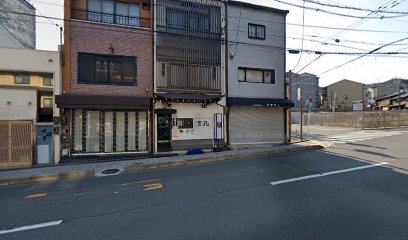
Essential bars & hidden hideouts
The Common One Bar Kyoto
Experience the art of mixology at The Common One Bar in Kyoto, where traditional charm meets modern cocktail culture.
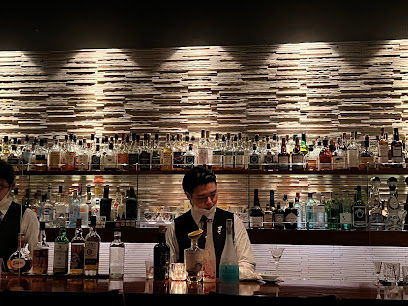
Man in the Moon Gion
Discover the exquisite flavors of Japan at Man in the Moon Gion, a premier grill restaurant in Kyoto's enchanting Gion district.

Gion Finlandia Bar
Experience the vibrant nightlife of Kyoto at Gion Finlandia Bar, where expertly crafted cocktails meet the enchanting atmosphere of Gion.
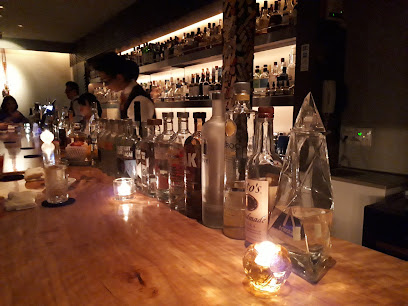
CRAFT倶楽部京都
Experience the vibrant nightlife at CRAFT倶楽部京都, where innovative cocktails meet traditional Japanese hospitality in the heart of Gion.
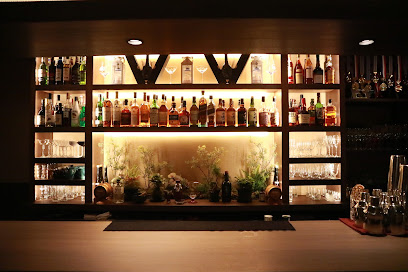
Bar Prost
Bar Prost: A cozy Kyoto bar offering an extensive drink selection and a warm atmosphere, perfect for unwinding after a day of sightseeing.
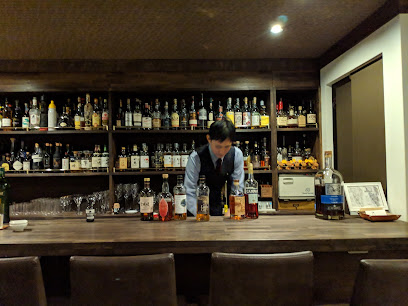
Gion SAMBOA
Discover Gion SAMBOA, a charming bar in Kyoto's historic Gion district, offering local drinks and a unique blend of tradition and modernity.
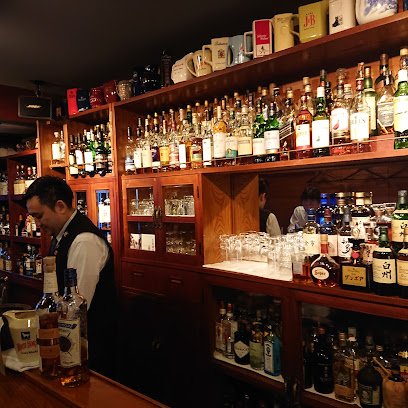
Talisker
Discover the charm of Talisker in Kyoto's Gion district, where modern cocktails meet traditional Japanese ambiance for an unforgettable evening.
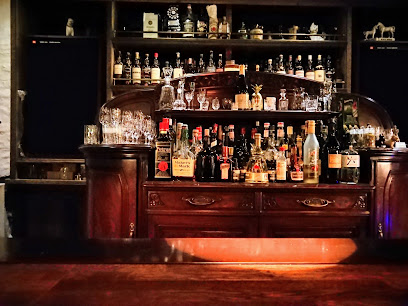
Le Peu
Discover the enchanting atmosphere of Le Peu, a bar in Kyoto that offers a unique blend of traditional charm and modern nightlife.
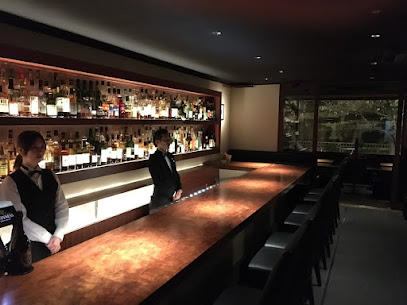
bar mousse
Experience Kyoto's vibrant nightlife at Bar Mousse, where expertly crafted cocktails meet warm ambiance for an unforgettable evening.
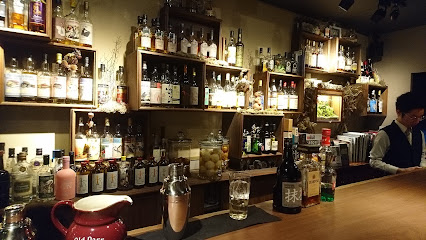
Bar鳴子
Discover the exquisite fusion of traditional and modern at Bar鳴子, a must-visit bar in Kyoto's enchanting Gion district.
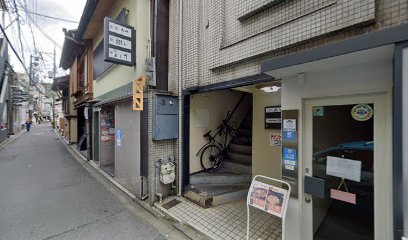
Local Phrases
-
- Helloこんにちは
[Konnichiwa] - Goodbyeさようなら
[Sayonara] - Yesはい
[Hai] - Noいいえ
[Iie] - Please/You're welcomeどうぞ
[Douzo] - Thank youありがとうございます
[Arigatou gozaimasu] - Excuse me/Sorryすみません
[Sumimasen] - How are you?お元気ですか?
[Ogenki desu ka?] - Fine. And you?元気です。あなたは?
[Genki desu. Anata wa?] - Do you speak English?英語を話せますか?
[Eigo o hanasemasu ka?] - I don't understandわかりません
[Wakarimasen]
- Helloこんにちは
-
- I'd like to see the menu, pleaseメニューを見せてください
[Menyuu o misete kudasai] - I don't eat meat肉は食べません
[Niku wa tabemasen] - Cheers!乾杯!
[Kanpai!] - I would like to pay, pleaseお会計をお願いします
[O-kaikei o onegaishimasu]
- I'd like to see the menu, pleaseメニューを見せてください
-
- Help!助けて!
[Tasukete!] - Go away!去って!
[Satte!] - Call the Police!警察を呼んで!
[Keisatsu o yonde!] - Call a doctor!医者を呼んで!
[Isha o yonde!] - I'm lost道に迷いました
[Michi ni mayoimashita] - I'm ill具合が悪いです
[Guai ga warui desu]
- Help!助けて!
-
- I'd like to buy...買いたいです
[Kaitai desu] - I'm just looking見てるだけです
[Miteru dake desu] - How much is it?いくらですか?
[Ikura desu ka?] - That's too expensiveそれは高すぎます
[Sore wa takasugimasu] - Can you lower the price?値段を下げてもらえますか?
[Nedan o sagete moraemasu ka?]
- I'd like to buy...買いたいです
-
- What time is it?今何時ですか?
[Ima nanji desu ka?] - It's one o'clock1時です
[Ichiji desu] - Half past (10)10時半です
[Juuji han desu] - Morning朝
[Asa] - Afternoon午後
[Gogo] - Evening夕方
[Yuugata] - Yesterday昨日
[Kinou] - Today今日
[Kyou] - Tomorrow明日
[Ashita] - 1一
[Ichi] - 2二
[Ni] - 3三
[San] - 4四
[Yon] - 5五
[Go] - 6六
[Roku] - 7七
[Nana] - 8八
[Hachi] - 9九
[Kyuu] - 10十
[Ju]
- What time is it?今何時ですか?
-
- Where's a/the...?...はどこですか?
[... wa doko desu ka?] - What's the address?住所は何ですか?
[Juusho wa nan desu ka?] - Can you show me (on the map)?地図で見せてもらえますか?
[Chizu de misete moraemasu ka?] - When's the next (bus)?次の(バス)はいつですか?
[Tsugi no (basu) wa itsu desu ka?] - A ticket (to ....)チケット(...へ)
[Chiketto (... e)]
- Where's a/the...?...はどこですか?
History of Gion
-
Gion's beginnings date back to the 7th century when it developed as a district to accommodate travelers visiting the Yasaka Shrine. Initially a place for merchants and tradespeople, Gion grew into a bustling area known for its teahouses and traditional inns, or 'ryokan', catering to visitors seeking spiritual solace and cultural experiences.
-
During the Edo period (1603-1868), Gion became famous for its geisha, or 'geiko', culture. The area was home to numerous 'okiya' (geisha houses) where young women were trained in traditional arts such as tea ceremony, dance, and music. This period solidified Gion's reputation as a center for refined entertainment and has continued to shape its cultural identity.
-
One of the most famous festivals in Japan, Gion Matsuri, has its roots in Gion, originating in the 9th century. It began as a purification ritual to appease the gods during an outbreak of plague. Today, it spans the entire month of July and features elaborate floats, parades, and traditional music, showcasing the rich cultural heritage of Kyoto.
-
In the late 19th and early 20th centuries, Kyoto, including Gion, faced pressures of modernization and urbanization. As Japan transitioned into a more industrialized society, Gion retained its traditional charm amidst the changes, with efforts made to preserve its historic architecture and cultural practices, distinguishing it from the rapid development seen in other parts of the country.
-
In contemporary times, Gion remains a vital cultural hub, balancing its historical roots with modern influences. It attracts tourists worldwide who seek to experience the allure of geisha culture, traditional tea houses, and stunning temples. Preservation efforts continue to maintain the neighborhood's unique character, ensuring Gion's status as an emblem of Kyoto's rich heritage.
Gion Essentials
-
Gion is conveniently located in the heart of Kyoto and is easily accessible from various parts of the city. From Kyoto Station, take the Karasuma Subway Line to Shijo Station, then transfer to the Hankyu Kyoto Line and disembark at Gion-Shijo Station. Alternatively, you can take a bus directly to Gion from several neighborhoods. Buses 100 and 206 provide good connections. The journey typically takes around 15-30 minutes depending on traffic.
-
Gion is a compact neighborhood, making it ideal for exploring on foot. Many of its attractions, including temples and traditional tea houses, are within walking distance of each other. For longer distances, Kyoto's public transportation system, including buses and subways, is efficient. Bicycles can be rented from local shops, offering a fun way to explore the area. Taxis are also readily available if needed.
-
Gion is generally a safe neighborhood for tourists, with low crime rates. However, like any urban area, it is wise to remain vigilant. Avoid poorly lit alleyways at night and keep an eye on your belongings in crowded areas, especially around popular tourist spots. There are no specific areas within Gion known for high crime rates targeting tourists, but practicing standard safety precautions is always recommended.
-
In case of an emergency, dial 110 for police assistance or 119 for fire and medical emergencies in Japan. Hospitals and clinics are accessible in Kyoto, with some located near Gion. It’s advisable to have travel insurance that covers medical emergencies. In case of minor health issues, pharmacies are available throughout Gion, where you can find over-the-counter medications.
-
Fashion: Do dress modestly, especially when visiting religious sites. Avoid wearing revealing clothing. Religion: Do respect local customs and traditions; be quiet and respectful in temples. Public Transport: Do be mindful of fellow passengers; it is considered rude to speak loudly. Don’t eat or drink on public transportation. Greetings: Do greet people with a polite bow and a smile. Eating & Drinking: Do try local delicacies like kaiseki and matcha; don’t tip in restaurants, as it is not customary in Japan.
-
To experience Gion like a local, consider attending a traditional tea ceremony in one of the tea houses. Visit the local markets early in the morning to see residents shopping for fresh ingredients. Participating in local festivals, such as the Gion Matsuri in July, offers a unique insight into the culture. Engage with locals, who are often friendly and willing to share their knowledge of the area’s history. Lastly, try to visit the less crowded streets of Gion, like Hanami-koji, to soak in the atmosphere without the tourist rush.
Nearby Cities to Gion
-
Things To Do in Nara
-
Things To Do in Osaka
-
Things To Do in Nagoya
-
Things To Do in Kanazawa
-
Things To Do in Hiroshima
-
Things To Do in Tokyo
-
Things To Do in Fukuoka
-
Things To Do in Ulsan
-
Things To Do in Pohang
-
Things To Do in Gyeongju
-
Things To Do in Busan
-
Things To Do in Andong
-
Things To Do in Daegu
-
Things To Do in Suncheon
-
Things To Do in Daejeon












